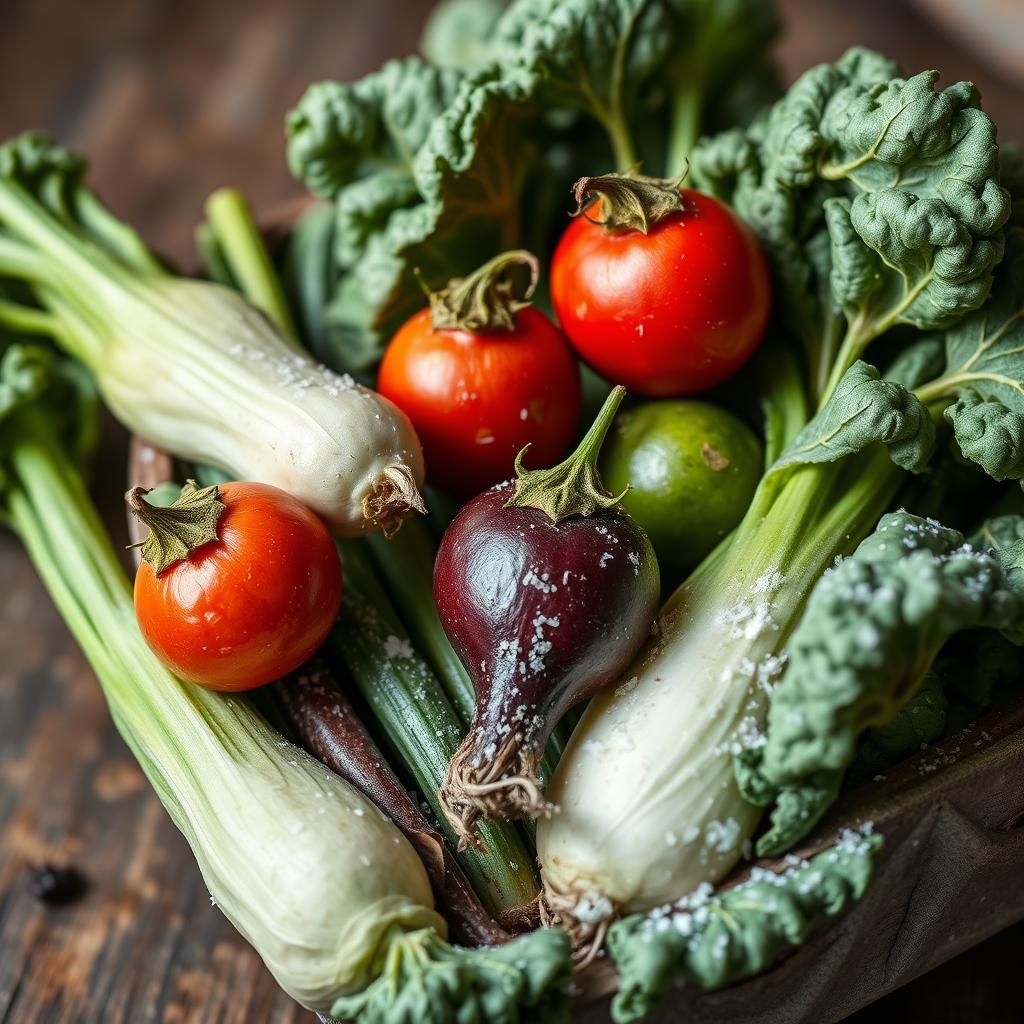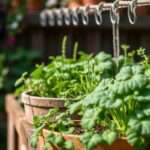Ultimate Guide to Growing and Cooking Winter Vegetables in Australia

As the cooler months approach, many gardeners in Australia may wonder how to make the most of their vegetable patches. Winter vegetables offer a unique opportunity to cultivate delicious produce while navigating the seasonal challenges of frost and shorter daylight hours. This ultimate guide aims to provide you with essential tips for growing and cooking winter vegetables, tailored specifically for the diverse Australian climate. From selecting the right varieties to optimal planting techniques, along with inspiring recipes that highlight these hearty crops, this guide will equip you with everything you need to thrive in your winter gardening and culinary adventures.
Winter Vegetables in Australia
In Australia, winter vegetables thrive during the cooler months, providing essential nutrients and flavors for a variety of dishes. The winter season, which typically spans from June to August, creates the ideal conditions for cultivating hearty vegetables that can withstand lower temperatures and occasional frost. Common winter vegetables include kale, brussels sprouts, carrots, and potatoes, all of which are rich in vitamins and minerals. These vegetables not only contribute to a healthy diet but also support local agriculture, as many Australian farmers specialize in their cultivation to meet the demand for seasonal produce.
Popular Winter Vegetables
Australia boasts a range of winter vegetables that are popular among chefs and home cooks alike. Varieties such as broccoli, cauliflower, and cabbage are staples in many kitchens, known for their versatility and nutritional value. These vegetables can be used in soups, stews, and roasted dishes, making them a favorite choice during the colder months. Additionally, root vegetables like beets and parsnips are also in season, offering unique flavors and textures that complement a hearty winter meal.
Growing Conditions for Winter Vegetables
The growing conditions for winter vegetables in Australia are influenced by the country's diverse climate zones. In cooler regions, such as Victoria and Tasmania, the milder winter temperatures allow for a longer growing season, while warmer areas, like Queensland, may have a shorter range of winter vegetables available. Proper soil preparation and moisture management are crucial in these conditions, with vegetables requiring well-draining soil and adequate sunlight to thrive even as temperatures drop.
Nutritional Benefits
Winter vegetables are packed with nutritional benefits, making them an excellent addition to any diet. For instance, vegetables like kale and spinach are rich in vitamins A, C, and K, while root vegetables provide essential fiber and antioxidants. Consuming a variety of these vegetables helps boost the immune system, particularly important during the winter months when colds and flu are more prevalent. Including a colorful array of these vegetables in meals can help ensure a balanced intake of nutrients.
See also:
Harvesting and Storage Techniques
Effective harvesting and storage techniques are vital for maintaining the quality of winter vegetables. Many of these vegetables can be harvested throughout the winter, often after the first frost, which can enhance their sweetness and flavor. Proper storage methods, such as keeping root vegetables in a cool, dark place, can help prolong freshness. For leafy greens, using breathable bags in the refrigerator can prevent wilting and spoilage, ensuring that they remain crisp and flavorful for longer periods.
Seasonal Recipes
Incorporating winter vegetables into seasonal recipes is a great way to embrace the flavors of the season. Dishes such as hearty vegetable soups, roasted winter salads, and creamy gratins can highlight the natural taste of these vegetables. By using seasonal produce, cooks can not only create delicious meals but also support local farmers and reduce the carbon footprint associated with transporting out-of-season ingredients. Simple recipes that include a mix of winter vegetables can lead to satisfying and nourishing meals for family and friends.
| Vegetable | Nutritional Value | Season |
|---|---|---|
| Kale | High in vitamins A, C, and K | June to August |
| Brussels Sprouts | Rich in fiber and antioxidants | June to August |
| Carrots | Good source of beta-carotene | May to September |
| Cabbage | Contains vitamins C and K, fiber | June to August |
| Potatoes | High in potassium and vitamin C | Year-round |
A Comprehensive Overview of Winter Vegetable Varieties in Australia
When venturing into the world of winter vegetables in Australia, it's crucial to recognize the numerous varieties that flourish during the cooler months. Among the most popular are broccoli, cauliflower, spinach, kale, and carrots, all of which can be easily grown in various climates across the country. These vegetables are not only hardy but also packed with nutrients, making them ideal for both home gardeners and commercial producers. Their ability to withstand cold temperatures allows for an extended growing season, offering a bountiful harvest that can be enjoyed throughout the winter. Understanding the specific growing needs and characteristics of these vegetables will ensure a successful winter garden.
Choosing the Right Winter Vegetable Seeds
Selecting the right seeds is the foundation of a successful winter vegetable garden in Australia. It is vital to choose varieties that are well-suited for the specific climate and soil conditions of your region. For instance, cold-resistant seeds like brussels sprouts and leeks thrive in cooler temperatures, while beets and turnips can handle frost. Consulting local gardening resources and experimenting with heirloom or hybrid seeds can help determine the best choices for your garden, ensuring bountiful yields throughout the winter months.
Preparing Your Soil for Winter Planting
Proper soil preparation is essential for cultivating winter vegetables. Begin by testing the pH and nutrient levels of your soil; winter vegetables generally prefer slightly acidic to neutral soil. Amending the soil with organic matter, such as compost or well-rotted manure, will improve its texture and nutrient content. Tilling the soil to a depth of at least 12 inches ensures good drainage and aeration, which are critical for root development during the colder months. A well-prepared garden bed will encourage strong growth and improve overall vegetable quality.
See also:
Winter Vegetable Care and Maintenance
During the winter months, maintaining your vegetable garden requires consistent care for optimal growth. Regular monitoring for pests and diseases is crucial, even in cooler weather. Applying a protective layer of mulch not only helps to conserve soil moisture but also insulates the roots against cold temperatures. Irrigation is still essential; however, it's important to avoid over-watering, as this can lead to root rot. Pruning or harvesting outer leaves can promote better air circulation, helping prevent disease issues while allowing the inner growth to thrive.
Harvesting and Storing Winter Vegetables
Understanding when and how to harvest winter vegetables is key to maximizing their flavor and nutritional value. Many winter vegetables can be harvested like leafy greens, which can be cut regularly to encourage additional growth. Root vegetables, such as carrots and parsnips, can be harvested when they reach a desirable size, often after the first frost enhances their sweetness. Proper storage is vital; most winter vegetables can be kept in a cool, dark place with good ventilation. Root veggies often store well in sand or sawdust, while leafy greens should be kept in a refrigerator to maintain their freshness.
Delicious Recipes for Cooking Winter Vegetables
Cooking with winter vegetables opens up a world of culinary possibilities. Popular methods include roasting, steaming, and sautéing, which help to bring out the natural flavors of these vegetables. For instance, roasting root vegetables with herbs and olive oil creates a hearty winter dish, while a stir-fry featuring kale and broccoli can make for a quick and nutritious meal. Incorporating seasonal spices and ingredients such as garlic, citrus, and nuts can elevate your dishes, transforming humble winter vegetables into mouthwatering feasts perfect for cozy nights in.
Questions from Our Readers
What are the most common winter vegetables grown in Australia?
The most common winter vegetables grown in Australia include broccoli, cauliflower, cabbage, carrots, and spinach. These vegetables thrive in the cooler temperatures of winter, providing a good harvest during the colder months.
When is the best time to plant winter vegetables in Australia?
The best time to plant winter vegetables in Australia is typically from April to June, depending on the specific region. Planting during this period takes advantage of the cooler temperatures, which help enhance the growth of winter crops.
See also:
What are the benefits of growing winter vegetables?
Growing winter vegetables offers several benefits, such as improved soil health, reduced pest infestations, and an extended harvest season. These vegetables are also rich in nutrients and can help maintain a healthy diet during the colder months.
How can I protect my winter vegetables from frost?
To protect winter vegetables from frost, gardeners can use frost cloths, create row covers, or even construct a simple hoop house. These methods help insulate the plants and maintain a slightly warmer environment, preventing damage from freezing temperatures.

If you want to read more articles like Ultimate Guide to Growing and Cooking Winter Vegetables in Australia, we recommend you check out our Planter category.
Leave a Reply
Related Articles